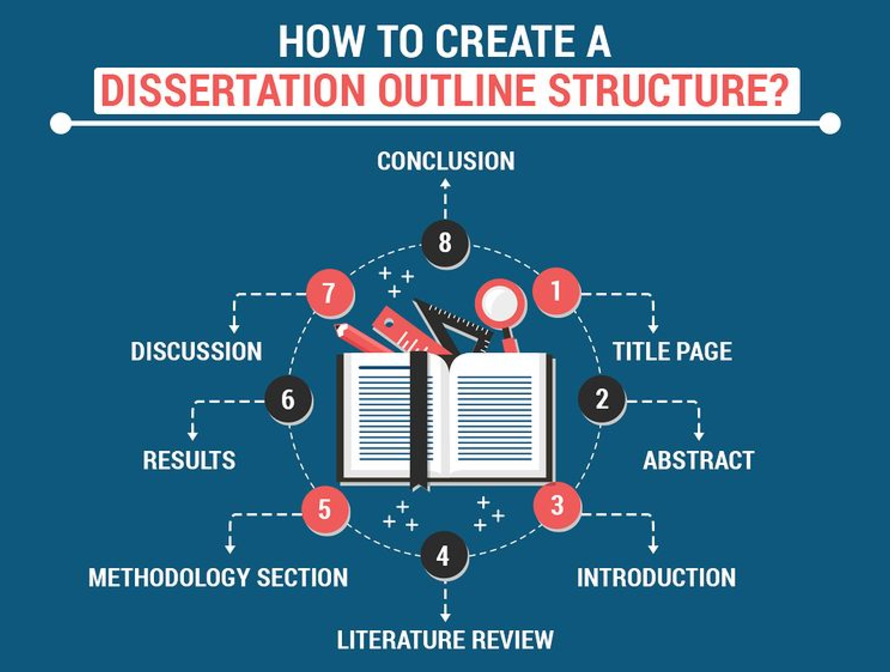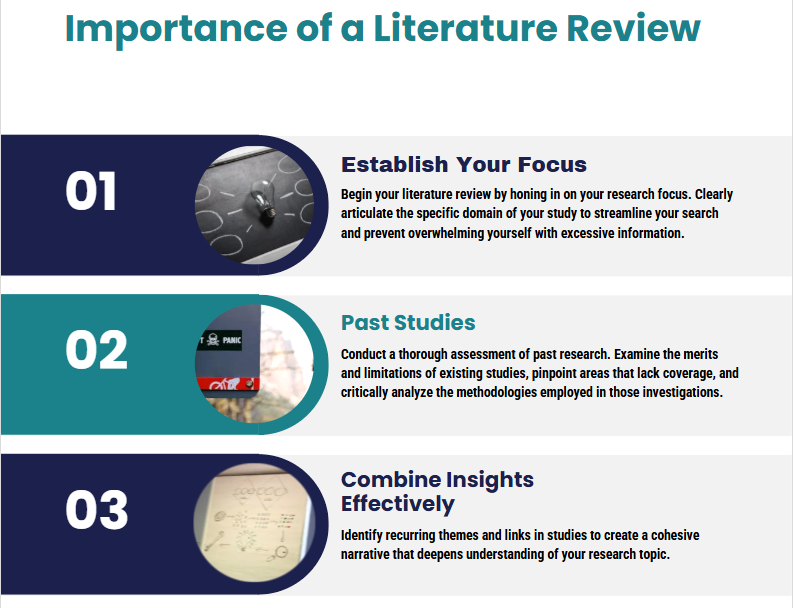The mere mention of the word, dissertation can send shivers down the spine of even the most seasoned academic. This monumental undertaking, the culmination of years of research and study, requires meticulous planning and execution. And at the heart of that execution lies a robust and well-structured dissertation outline. A poorly conceived outline can lead to a chaotic, disorganized, and ultimately unsuccessful dissertation. Conversely, a meticulously crafted dissertation outline serves as your roadmap, guiding you through the complex terrain of research, analysis, and writing.
This article will explore the key steps involved in crafting a stellar dissertation outline, transforming this daunting task into a manageable and even rewarding experience.
Step-by-Step Guide to Crafting a Stellar Dissertation Outline
Phase 1: Laying the Foundation – Defining Your Scope and Objectives
Before even thinking about chapters and sub-sections, you need a crystal-clear understanding of your dissertation's scope and objectives. This is where the foundational elements of your dissertation outline are established. Begin by revisiting your research question or hypothesis. What are you trying to prove or explore? Your dissertation outline must directly address this central question.
Next, conduct a thorough literature review to identify relevant existing scholarship. This review is crucial for shaping your argument and defining the boundaries of your research. The insights gleaned from this review will significantly inform the structure of your dissertation. For instance, you might discover gaps in the existing literature that your research directly addresses, influencing the emphasis placed on certain aspects in your dissertation outline.
Finally, establish the key concepts and theories that underpin your research. Clearly defining these elements ensures coherence and consistency throughout your dissertation. This clarity will be reflected in the logical flow and organization of your dissertation outline.
Phase 2: Structuring Your Dissertation Outline: A Blueprint for Success
With a firm grasp of your research objectives and relevant literature, you can begin to structure your dissertation outline. A typical outline for a dissertation follows a standard structure, but the specifics will vary depending on your discipline and research methodology. However, most dissertations include the following key components:
- Introduction: This section sets the stage for your research. It should clearly state your research question, provide relevant background information, and outline the structure of your dissertation. Your dissertation outline should meticulously plan this crucial opening.
- Literature Review: This section summarizes existing scholarship relevant to your research. It highlights key findings, identifies gaps in the literature, and positions your research within the broader academic context. The outline should detail the specific areas of literature that you intend to cover and the arguments you will make.
- Methodology: This section describes the methods you used to collect and analyze your data. The methodology chapter should be detailed so that other researchers could replicate the study in future research. The outline should map out the precise methods, including data collection instruments, sampling techniques, and analytical procedures.
- Findings/Results: This section presents your research findings. It should be clear, concise, and supported by evidence. Your dissertation outline should clearly delineate the anticipated results and how they will be presented (tables, graphs, etc.).
- Discussion/Analysis: This section interprets your findings in light of your research question and the existing literature. It should discuss the implications of your research and suggest areas for future research. The outline should pre-emptively address potential challenges in interpreting the findings and the ways you will overcome them.
- Conclusion: This section summarizes your key findings and restates your conclusions. It should reiterate the significance of your research and its contribution to the field. The outline for your dissertation should specify the main points to be reiterated and any final reflections to be included.
- Bibliography/References: A comprehensive list of all sources cited in your dissertation. The outline should also consider the citation style and formatting requirements early on.

Phase 3: Developing Detailed Chapter Outlines within your Dissertation Outline
Once you have a solid framework for your entire dissertation, it's time to delve into the details. Each chapter within your dissertation outline should have its own detailed outline. This involves breaking down each chapter into sections and subsections, with clear headings and subheadings. This level of detail is crucial for maintaining focus and preventing writer's block.
For example, your literature review section might be broken down into subsections addressing specific themes or theoretical perspectives. Similarly, your methodology chapter might be divided into subsections describing your sampling technique, data collection instruments, and data analysis procedures. This granular approach ensures that your dissertation outline is not just a skeletal framework but a comprehensive guide for writing each chapter.
Phase 4: Refining Your Dissertation Outline: Iteration and Feedback
Crafting a stellar dissertation outline is an iterative process. It's unlikely that your initial draft will be perfect. Expect to revise and refine theoutline as your research progresses and your understanding deepens. Seek feedback from your advisor or other trusted mentors. They can provide invaluable insights and help you identify any weaknesses or gaps in your dissertation outline.
Remember that your dissertation outline is a dynamic tool. It should evolve with your research, adapting to new insights and discoveries. Don't be afraid to make changes and adjustments as needed. This flexibility is key to ensuring that the outline for your dissertation remains a useful and relevant guide throughout the entire writing process.
Using Your Dissertation Outline Effectively During the Writing Process
A well-developed dissertation outline is not just a planning tool; it's a crucial resource throughout the entire writing process. Use it as a guide as you write each chapter, ensuring that you stay on track and maintain a consistent flow of ideas. The detailed headings and subheadings in your outline will help you organize your thoughts and ensure that you address all the necessary aspects of your research.
Regularly revisit your dissertation outline to check for consistency and coherence. Ensure that each chapter logically flows from the previous one and that all the sections within each chapter contribute to the overall argument of your dissertation. Theoutline for your dissertation should serve as a constant reminder of your research objectives and the structure of your argument.
Common Mistakes to Avoid in the Dissertation Outline
The dissertation outline is more than a skeletal framework; it's the roadmap guiding your research journey. A well-structured outline ensures a cohesive, logical, and manageable research process, minimizing stress and maximizing the chances of producing a high-quality dissertation. Conversely, a poorly conceived outline can lead to confusion, inconsistencies, and ultimately, a weaker final product. Here are the common mistakes to avoid when developing a dissertation outline.
1. Lack of Clarity and Specificity: One of the most frequent errors is a vague and overly general outline. Instead of concrete chapter headings and subheadings, many students opt for broad, sweeping statements. For example, “Chapter 3: Methodology” is insufficient. A stronger approach would be “Chapter 3: Methodology – Quantitative Analysis of Survey Data Utilizing Regression Modeling.” This level of detail clarifies your approach, ensuring you stay focused and avoid scope creep. Similarly, subheadings should delineate specific arguments or analyses within each chapter.
2. Ignoring the Argumentative Structure: A dissertation is not a simple compilation of information; it’s an argument. Your outline should reflect this. Each chapter should contribute to the overall argument, building upon preceding chapters and culminating in a compelling conclusion. Failing to map out this logical progression will result in a disjointed and unconvincing dissertation. Consider using a mind map or outlining software to visualize the relationship between your chapters and sub-chapters, ensuring a clear flow of ideas.
3. Insufficient Research Integration: Your outline shouldn't just list topics; it should demonstrate how your research will address them. Each section should explicitly state the research questions or hypotheses it will explore and the methods used to answer them. Avoid simply listing potential sources; instead, indicate how specific sources will be used to support particular claims. This anticipates potential gaps in your research and allows for timely adjustments.
4. Neglecting the Literature Review: Some students often underestimate the power of the literature review in the outline. It’s not just a summary of existing research; it’s a critical analysis positioning your work within the broader scholarly conversation. Your outline should clearly delineate the scope of your literature review, highlighting key themes and debates, and importantly, how your research contributes to, challenges, or expands upon existing knowledge. A poorly defined literature review section can lead to a weak foundation for your arguments.

5. Unrealistic Timelines and Scope: Many students overestimate what they can achieve within the given timeframe. A realistic timeline is critical. Break down the dissertation into manageable tasks, assigning realistic deadlines to each chapter and section. This requires a thorough self-assessment of your writing speed and research capabilities. An overly ambitious outline, packed with too much information, is a recipe for failure. You should prioritize essential components and even cut less crucial elements to maintain a manageable scope.
6. Ignoring Feedback and Revision: Your outline isn't set in stone. It's a dynamic document that should be refined and revised throughout the research process. Seek feedback from your supervisor or peers early and often. Be prepared to adjust your outline based on their insights and on your evolving understanding of the research topic. Regular revisions will ensure your dissertation remains focused and aligned with your research goals.
Avoiding these common mistakes will enable you to create a robust and effective dissertation outline that serves as a reliable guide throughout your research journey. Remember, a well-structured outline is a significant investment in the quality and success of your dissertation. The dissertation outline is the cornerstone upon which a strong and impactful academic work is built.
The Bottom Line
Crafting a stellar dissertation outline is a critical first step in the dissertation writing process. It provides a roadmap for your research, ensuring a well-organized and coherent work that effectively communicates your findings. By following the steps outlined in this article, you can transform this daunting task into a manageable and even rewarding experience, setting the stage for a successful and impactful dissertation. Remember that the dissertation outline is your most valuable ally. Invest the time and effort required to create a robust and detailed outline, and you will reap the rewards throughout the entire dissertation writing process.
A well-crafted dissertation outline significantly increases your chances of producing a high-quality dissertation that meets your academic goals and contributes meaningfully to your field of study. So, take the time to develop a strong outline – it’s an investment in your academic future. And finally, remember that your dissertation outline is a living document; refine it, adjust it, and perfect it until it truly reflects your research journey.
Hire Professional Dissertation Writing Service
At Exemplary Dissertations, we are the dissertation experts to engage whenever you need help with dissertations and similar assignments. We can craft a stellar outline and also write your dissertation to the best standards for academic excellence. Besides dissertation writing, we also do proofreading, editing, formatting and plagiarism removal. Talk to us today for professional help with dissertations, essays, research papers and case studies.